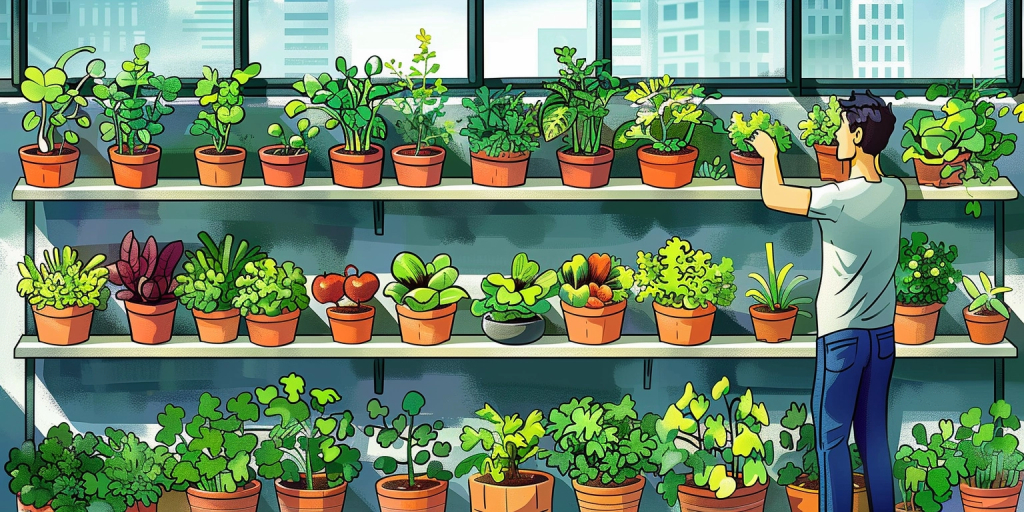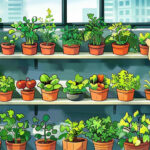Growing food and herbs in small apartments is a great way to have fresh produce at your fingertips. There are many ways to grow food in small spaces. You can use products such as the EZ GRO Garden System or Microgreen Machine starter kits as well as sprouts in mason jars. Other ways include using containers, vertical gardens, and hydroponics systems.

When growing food in small apartments, it is important to consider factors such as access to sunlight and the weight of your containers. Most fruiting and flowering plants need a full day of sunshine which can be hard to come by in an apartment—especially in a city where tall buildings can block the sun for at least part of the day. Balconies and rooftops offer the best chance of full sun. If you’re gardening on a windowsill, you can either choose plants that require less sunlight, such as certain salad greens and herbs, or you can add a grow light to mimic the sun’s rays.

Plants depend on their soil for water, oxygen, and nutrients. Because your apartment garden will likely involve containers, you can’t use ordinary garden soil because it will compact in pots, limiting access to oxygen and preventing water from flowing through. Thus, a well-draining potting mix is necessary. Potting mix is light and fluffy, efficiently circulating oxygen and water to keep roots healthy. And it’s somewhat sterile, so you won’t have to worry about bringing diseases or pests into your apartment.
Enter the Vertical EZ GRO Garden System – a marvel of space efficiency. This sleek vertical hydroponic setup allows you to grow a variety of plants in a compact footprint.
The Microgreen Machine microgreen starter kits, on the other hand, bring nutrient-packed microgreens right to your windowsill, perfect for a small-scale, nutrient-rich harvest.
For those with minimal space and a love for simplicity, mason jars are your new best friends. Sprouting seeds like alfalfa, lentils, or mung beans can provide a constant supply of fresh, crunchy sprouts that add a burst of nutrition to your meals.
Certain foods thrive in indoor environments. Leafy greens like lettuce, spinach, and kale are excellent choices. Herbs such as basil, mint, and parsley flourish on sunny windowsills. Compact plants like cherry tomatoes, peppers, and even dwarf citrus trees can also be considered if you have a bit more room.
The satisfaction of nurturing a tiny seed into a thriving plant is unparalleled. Witnessing the growth and transformation of your homegrown food is a rewarding experience, connecting you to nature’s cycles and the rhythm of life.
Food insecurity is a reality for many, and taking control of our own food production can make a significant impact. By growing our own food, we contribute to self-sufficiency, reduce our carbon footprint, and embrace a healthier, more sustainable lifestyle.
Let’s embark on this journey of cultivating our own food, no matter the size of our space. From vertical gardens to microgreen kits and the simplicity of sprouting, there’s a solution for every home. As we tend to our tiny havens of green, we nourish not only our bodies but also our souls, bringing a sense of empowerment, connection, and health into our daily lives.






